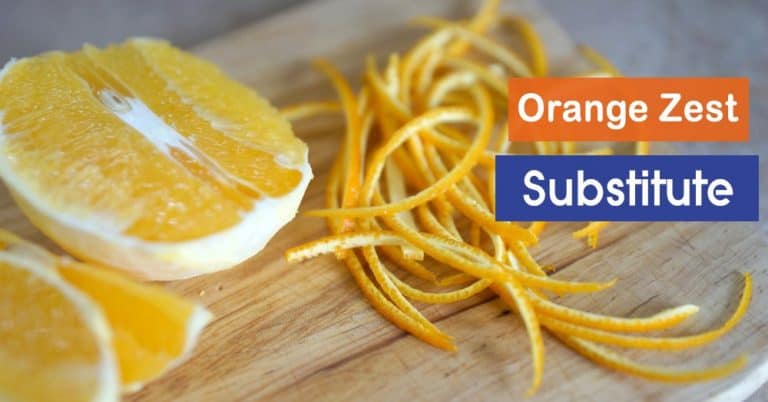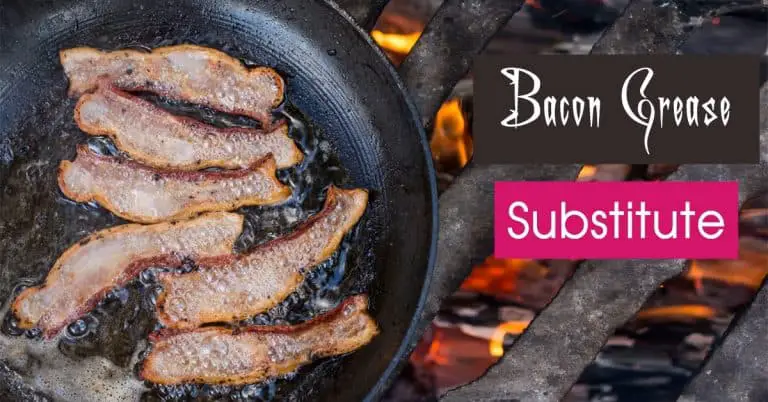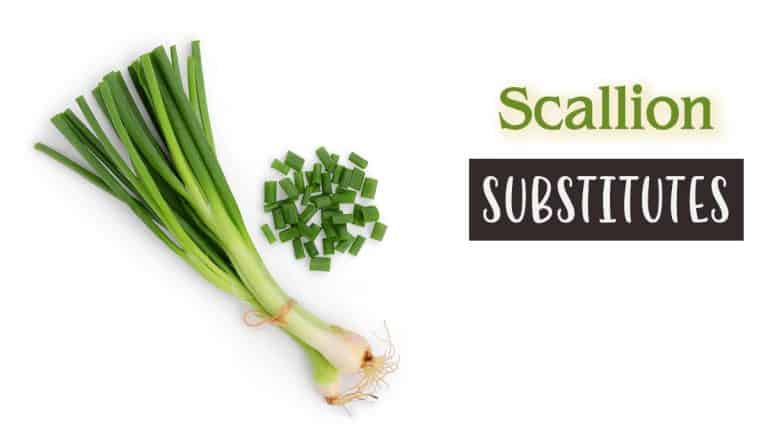
For those who are interested in Mediterranean cuisine, Orzo pasta is obviously not exotic. On the contrary, orzo is well-liked because of its firm texture and subtle flavor. However, it is essential to find Orzo pasta substitutes for a couple of reasons.
Instead of Orzo, there is a wide selection of alternatives, such as Arborio rice, Fregola, Couscous, Short-grained brown rice, Quinoa, Acini di pepe, Cauliflower rice, Pearl barley, Ditalini pasta, Orecchiette, Teff, Risi, and Tubettini.
In this article, we will unveil facts and nutritional profiles of these ingredients. Based on such information, you can find ones that suit your needs and preferences.
Interesting Facts About Orzo Pasta
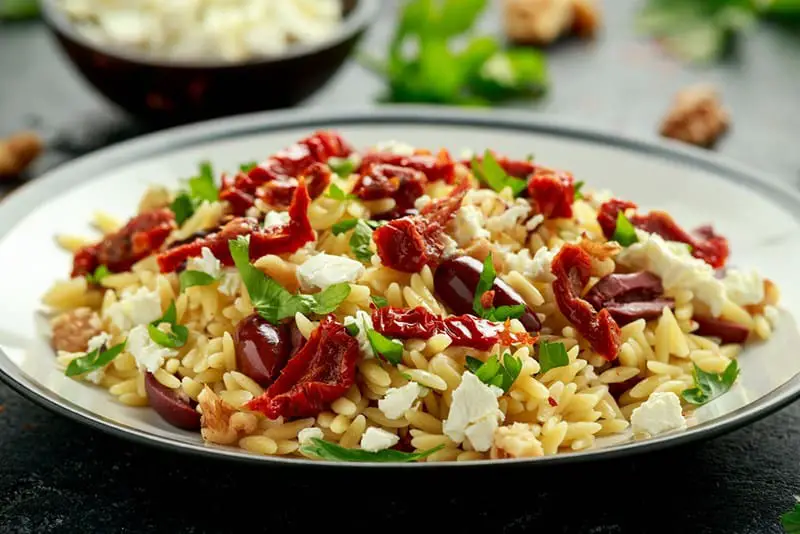
Orzo is one of the Italian pasta. The name is an Italian word, which means “Barley” in English. Despite its name “Barley,” Orzo does not contain barley in the texture. Instead, orzo is made with Semolina (Durum and Wheat Flour) and has an off-white color. Because of the small, flat-oval shape, many people may confuse Orzo with rice.
Though it comes from Italy, Orzo is very well-known in Greek and Turkey. The popular dishes are Orzo with tomato sauce, basil, parmesan cheese, and garlic, Orzo with Turkey Sausage and Kale, One-pot chicken, chickpeas, and Orzo.
Orzo is also suitable for casserole dishes – dishes cooked by a large, deep pan in the oven. It is straightforward to cook; put Orzo into salted water for 20 minutes until it becomes tender.
13 Orzo Pasta Substitutes For Food Enthusiasts
1. Arborio Rice
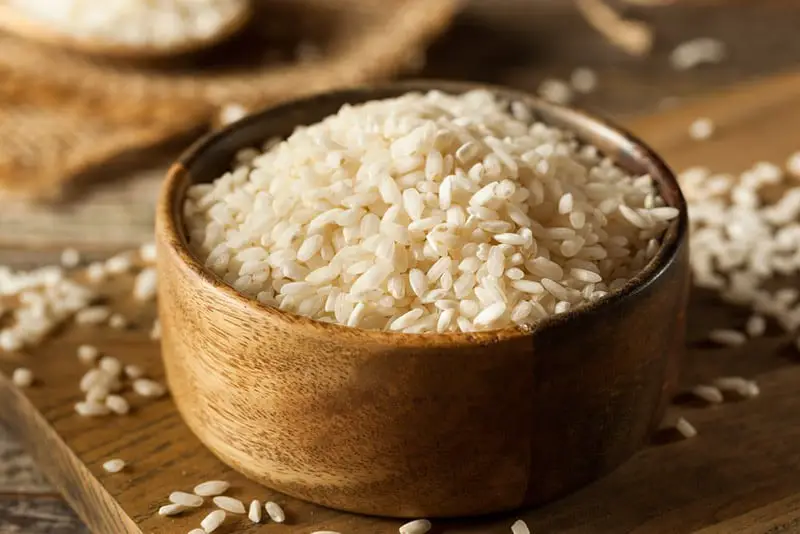
The best substitute for Orzo pasta is Arborio rice because of its low calories. Arborio is made of plants, while Orzo is made of wheat. Arborio rice originates from an area in Italy called the Po Valley.
Arborio rice is short, plump, and has an oval shape. Arborio rice is higher in starch regarding the nutritional profiles and has a creamier taste than Orzo due to amylopectin content.
It takes you 20 minutes to cook Arborio rice. After putting Arborio rice in a pot/pan, add 2 cups of water and boil with medium heat. Simmer Arborio rice until the liquid is fully absorbed. Arborio rice is best served with cold salads, white bean soup, roasted vegetables, and Arancini (Italian fried rice balls).
2. Fregola
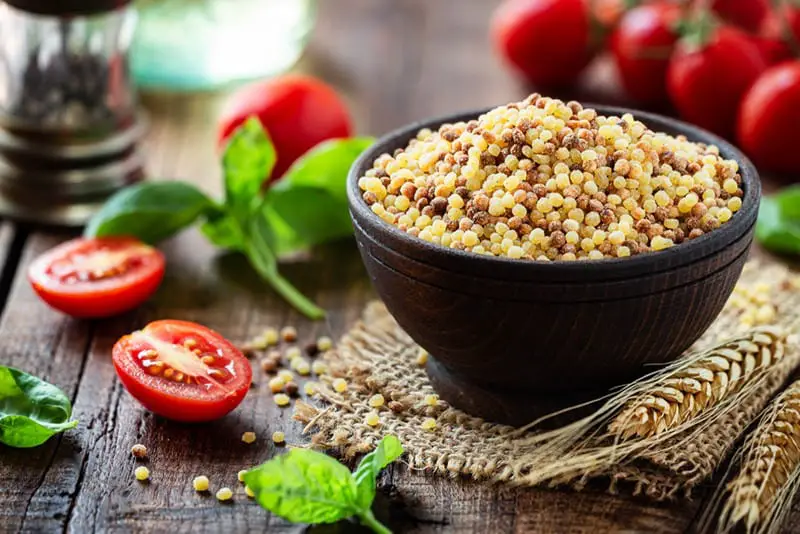
Fregola originates from the Sardinia region of Italy. Because of its popularity, Fregola is easier to find than Orzo. If you are Western and not living in Europe, you can purchase Fregola in local Gourmet markets which sell Western food.
Fregola is made out of semolina flour mixed with water to produce small beads. In the making process, people often toast Fregola instead of drying them like in the old days. If you are going to make seafood soup or baked pasta, Fregola is an ideal replacement for Orzo.
Fregola is often boiled in salted water with medium heat for 8-10 minutes like Orzo. It has some common recipes, such as Fregola Sarda Pasta with Tomatoes, Sardinian Fregola with Lamb, and Fregola with Seafood.
3. Couscous
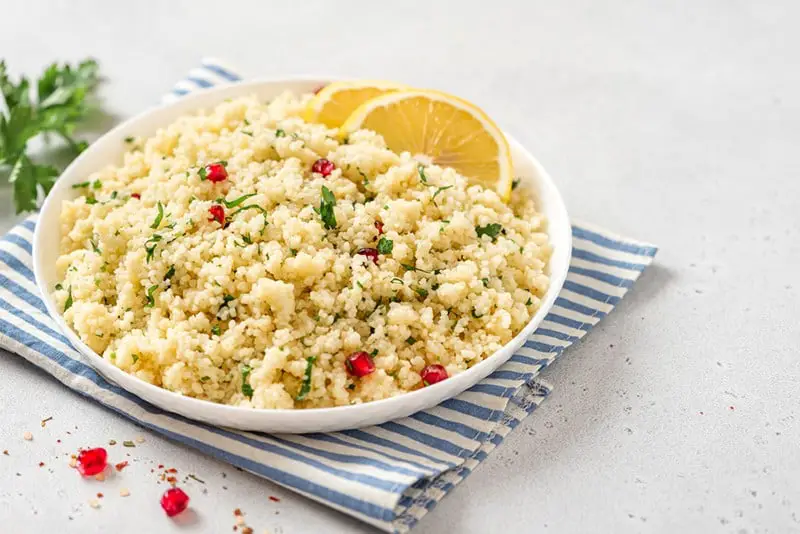
Couscous comes from Northern Africa, of which the most common type is Israeli Couscous. When Orzo is nowhere to be found in the area, you can buy Couscous, alternatively.
Both Orzo and Couscous are made with Semolina, but Couscous is made with granules, whereas Orzo is made with the denser parts of the wheat berry.
Based on its characteristics, Couscous cannot be cooked for too long. Otherwise, it will get too soft. The ideal time for cooking is from 8 to 10 minutes. While cooking, you have to leave the pot uncovered until it gets tender. To enhance the taste, you can add chicken flavor or vegetable stock into the liquid.
Couscous is a versatile ingredient. Couscous works well with chicken, roasted vegetables, spice, and honey. It can also be served as side dishes with onion, garlic, and chopped red saute. For those who prefer the bitterness and spicy taste, you can toss with vinaigrette emulsified, sweet mustard or arugula.
4. Short-grained Brown Rice

Short-grained brown rice is another name on top for best replacements for Orzo. If you are allergic to gluten or a vegan but afraid of not having enough energy, you can reasonably have adequate meals with short-grained brown rice.
Due to its low amount of carbohydrates and fat, short-grained brown rice is perfect for those who lose weight. A serving of short-grained brown rice (85g) contains 115 Kcal, 0.8 Fat, 24.1 Carbohydrate, 2.4g Protein.
This kind of rice is a good source of fiber which manipulates the digest system to work efficiently. Some typical recipes with short-grained brown rice include Mushroom Brown Rice Risotto, Oven-Baked Brown Rice, and Vegan Brown Rice Sushi.
5. Quinoa

Quinoa was called the “mother of Inca” by South Americans thousands of years ago. In 2013, the United Nations declared that year is “The International Year of Quinoa.” Quinoa comes in many varieties, such as white, red, and black.
Three types taste differently. White Quinoa is bitter and fluffy after cooking, whereas Red and Black Quinoa still keep their shape. Red Quinoa has a heartier taste and chewy taste, and black Quinoa is crunchy and sweet.
Quinoa is a healthy and nutritious ingredient. It is very high in fiber, vitamin E, phosphorus, iron, calcium, magnesium. For type 2 diabetes patients, eating Orzo is not a good idea.
In that case, Quinoa is a very excellent alternative for Orzo. Compared to other gluten-free ingredients such as refined tapioca, potato, or corn, Quinoa provides higher energy to your body.
Quinoa is often simmered in medium heat for 20 minutes and steamed for 5 minutes when removed from the gas stove. Quinoa can be used for breakfast, lunch, and dinner. It can be served both hot and cold. Because Quinoa absorbs liquid faster than pasta does, only pour sauce before serving.
6. Acini di pepe
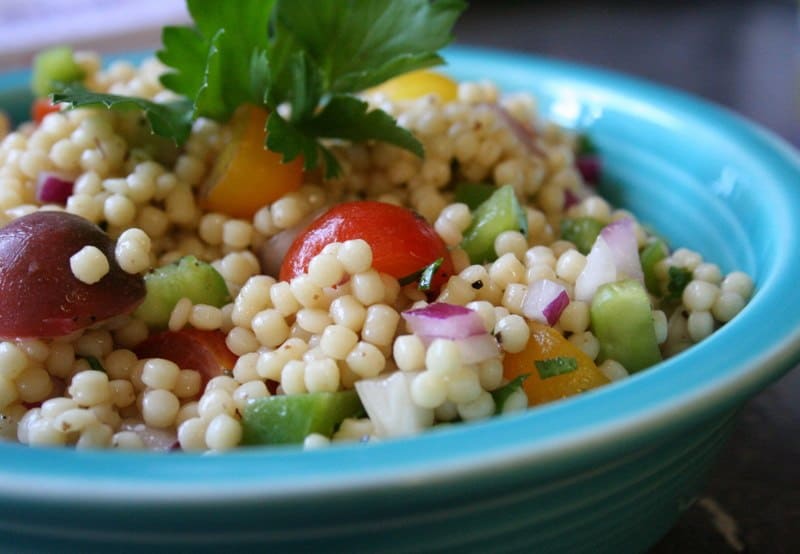
Acini di pepe comes from a region near Naples, in Italy. It is also known by another name: Peperini Pastina.
Acini di pepe has a small and round shape. It is made by milling the Semolina with Durum Wheat, then kneading with cold and fresh spring water. Acini di pepe is dried at low temperatures to preserve the flour’s natural color, texture, and aroma.
Acini di pepe is often eaten with snow peas, tomato soup. It has to be cooked for 8 minutes for the soup, while for the salad, it only takes 6 minutes to cook.
Celery and onion are often added to the liquid to enhance the aroma. You can make Sun-dried tomato sauce, basil, parmesan cheese, and garlic with Acini di pepe, Acini with Turkey Sausage, and Kale instead of Orzo.
7. Cauliflower Rice
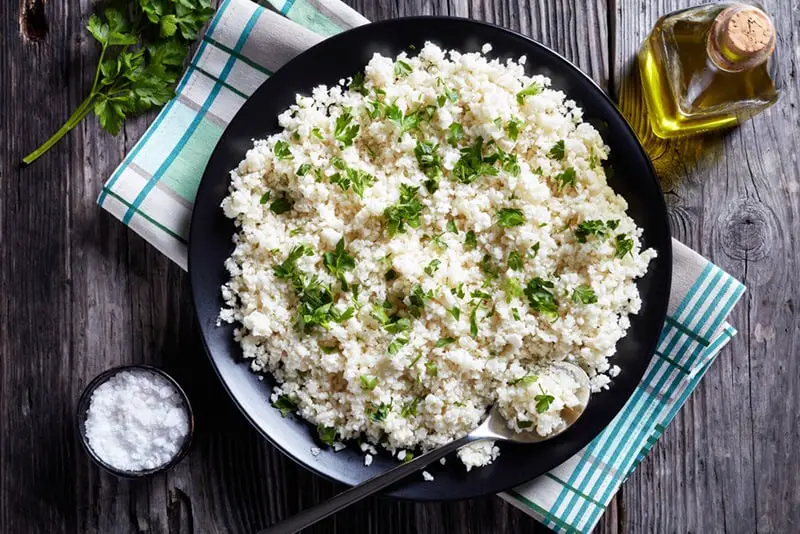
Another substitute for Orzo pasta is Cauliflower rice. It is an excellent source of soluble and insoluble fiber. Soluble dietary fiber is dissolved in water and turns into a gel in your stomach.
The gel absorbs cholesterol and removes it before cholesterol reaches your bloodstream. In the meantime, insoluble fiber acts as a prebiotic that feeds the good bacteria in your body. Hence, your body absorbs less unhealthy cholesterol.
Cauliflower rice also contains “sulforaphane,” a chemical associate with low blood pressure. Scientists prove that consuming Cauliflower rice keeps blood pressure stay low. Cauliflower rice is often served with a side dish such as meat, fish, poultry, and vegetable.
8. Pearl Barley
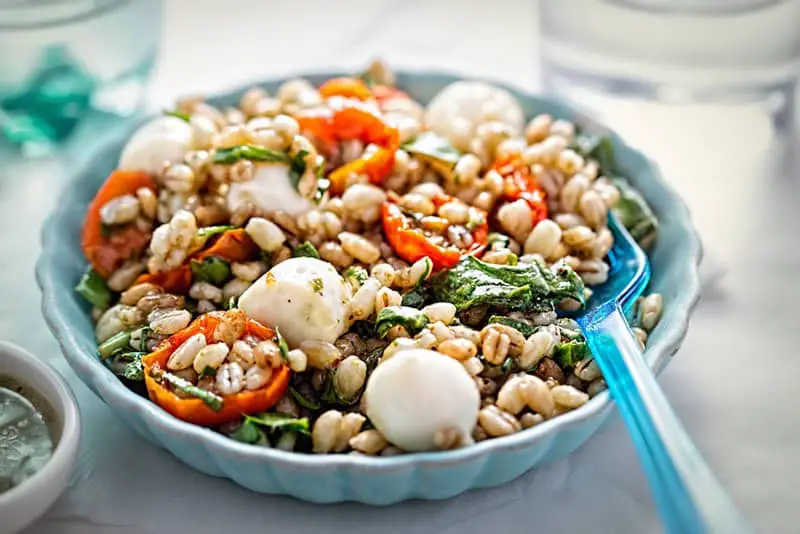
Pearl Barley is a wise choice when food enthusiasts are looking for Orzo substitutes. Pearl barley is harvested from the ears of barley. It has been processed to remove the outer hull and polish all of the bran layers.
Despite being processed, Pearl Barley remains their nutrients and minerals such as vitamins, calcium. Pearl Barley has a neutral-cereal taste, with the most distinctive feature is the crunchy texture.
To cook Pearl Barley, you need to simmer for 30 minutes. That duration ensures Pearl Barley gets soften, avoids being tough and unpleasant. Cooking time can be accelerated by using a pressure cooker.
Remember, one cup of Pearl Barley equals three cups of water and a pinch of salt. What else can be more tempting than Pearl Barley Risotto, Chorizo & Rosemary Pearl barley Risotto, Pearl Barley, Bacon, and Leek Casserole.
9. Ditalini Pasta
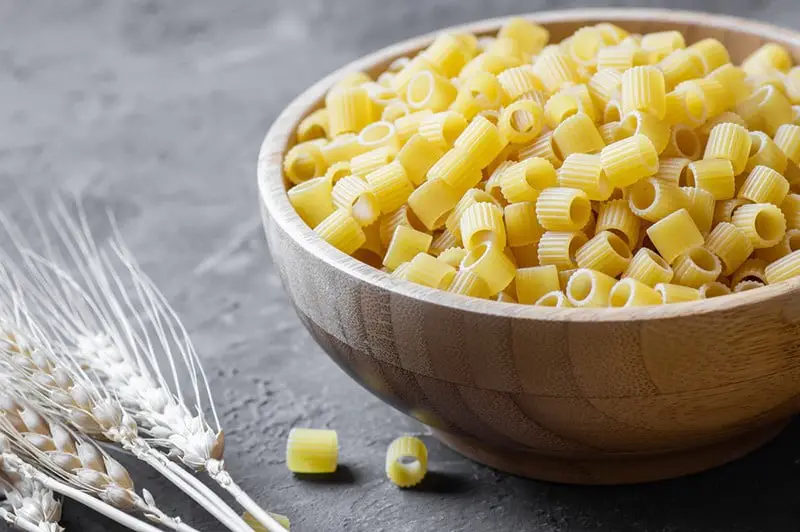
Ditalini pasta is a creamy, small-tube-like pasta. Ditalini is very famous in the South of Italy. Ditalini is named after the son of an Italian family, Garibaldini. Later, the name is changed to Ditalini because “Garibaldini” is tongue-twisted to somebody.
The shape is created to catch sauce to make it tasty in every spoon. Ditalini is boiled similarly to Orzo.
Ditalini has three sizes and can be found into two types: grooved “rigated” or smooth “lisci.” Grooved pasta is served with heavier sauce, and smooth pasta is more suitable for lighter sauce.
10. Orecchiette
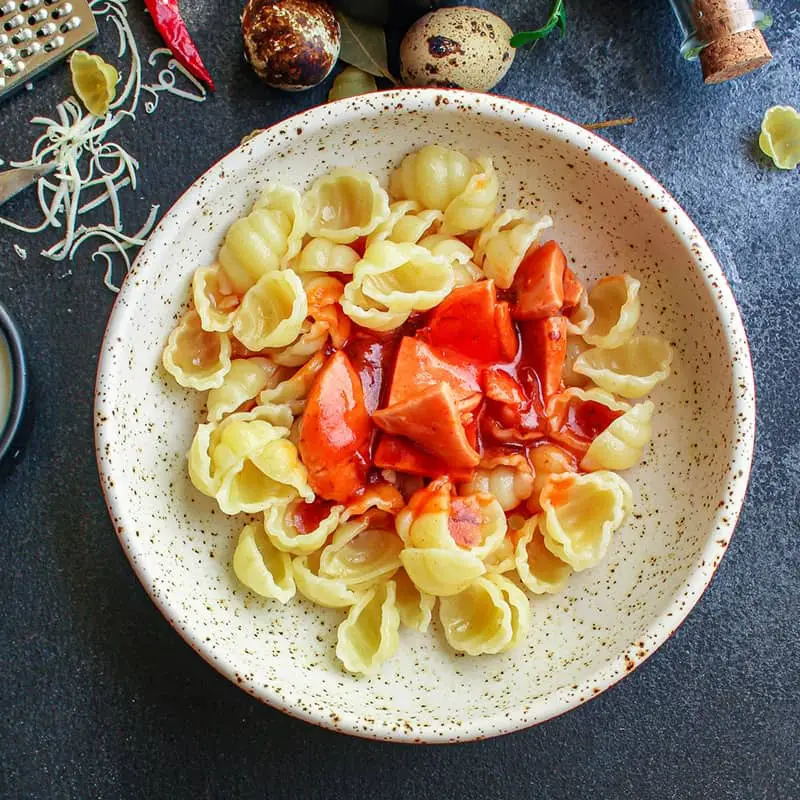
The word “Orecchiette” means little ears because this type of pasta has the shape of tiny ears. Orechiette has two sizes; the larger size is approximately ½ to ¾ wide, close to thumbnail size.
The large size is often mixed with a tomato-based sauce, while the small one goes best with soup. Orecchiette takes 45 minutes to cook, and it works well with tomatoes and Italian sausages.
11. Teff
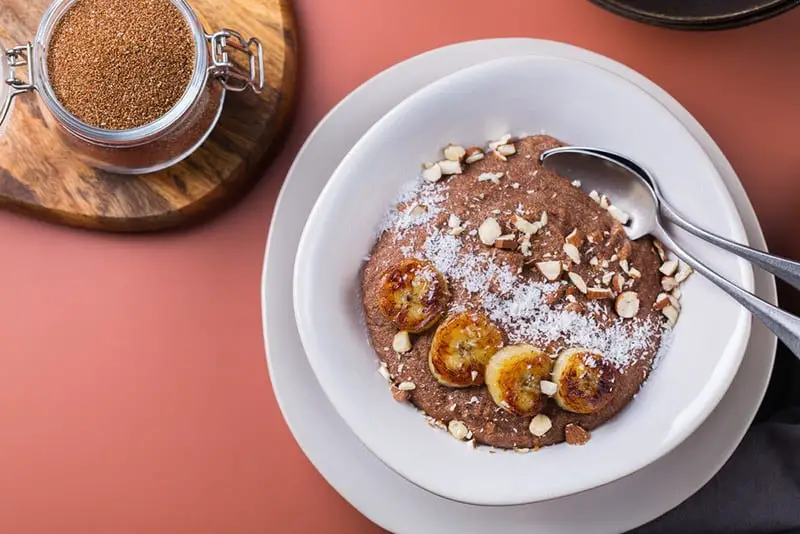
Teff belongs to the grass family. It is also the world’s smallest grain and comes in darker and lighter varieties.
Because it is so small, Teff is eaten as a whole grain rather than being split into bran and kernel. Thus, Teff is ideal as a gluten-free alternative for Orzo when food enthusiasts want to try something such as pancakes, cookies, cakes, muffins, or gluten-free egg noodles.
12. Risi

Risi (also known as Risoni) is made from a mixture of durum flour, semolina, and water. Then, it is kneaded into dough before being rolled flat and shaped. For a simple salad, ingredients like olive oil, fresh lemon juice, garlic, basil, chopped tomatoes, and pine nuts are mixed together with risi.
Risi can also be cooked with aubergines, capsicum, fresh herbs, semi-dried tomatoes, and bake in the oven. Commonly, Risi is added into the saucepan 10 minutes before finishing the cooking. That time is sufficient for Risi to be well-cooked.
13. Tubettini
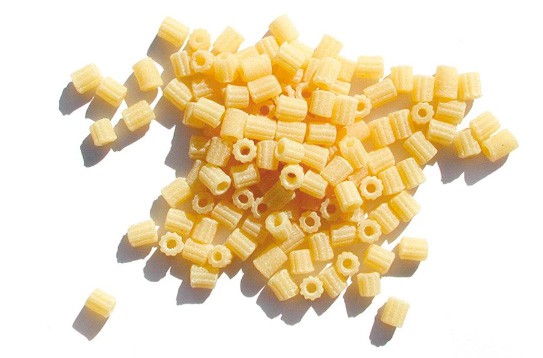
Tubettini is a tiny-shaped pasta. It can be used to replace Orzo because of the similar taste. Therefore, when you are out of Orzo, you can think of Tubettini as a suitable replacement Tubettini takes about 9 -11 minutes to cook.
If you play sports or work out, Tubettini is a mouth-watering but healthy ingredient for your body as it supplies a source of energy. Tubettini is most popular for soup and broth, and the famous Minestrone is cooked with this type of pasta. Check out how to cook Minestrone with Tubettini here.
Bonus Tips: 3 Reasons Why You Should Turn To Orzo Pasta Substitutes
Health Concerns
Orzo is not gluten-free, so it is not suitable for health issues such as high blood pressure and diabetes. Alternatively, they must look for gluten-free alternatives.
Unavailability
Orzo is familiar with Europeans, not everyone. Hence, for Mediterranean cuisine food enthusiasts living in other continents, it is harder for them to find Orzo in local grocery stores. In cáee that the supermarket has not restocked Orzo yet, what would you do in that case?
Dietary
Whole-wheat Orzo is incredibly high in calories, so those who want to lose weight will not see Orzo ideal. Orzo contains plentiful carbohydrates, which give your body a significant source of energy.
One serving (85g) of Orzo contains 42 grams of carbohydrates, 200 calories, 7g protein, which is 50% higher than one serving (85g) of boiled white rice.
Conclusion
If you find this helpful information, let’s fill your cupboard with a few of those 13 mentioned substitutes for Orzo. Tempting and nutritious meals are quite available if you are creative and “playful” with ingredients. We also want you to know that your love for food and cooking cannot be deferred.
So, wait no more, get in the kitchen and chop-chop!
Related Posts:
- Top 9 Highly-Recommended Wheat Starch Substitute
- 10 Ideas For Oat Bran Substitution – Easy To Find
- Top 10 Best Substitute For Potato Flour That You Can Find Anywhere!
- What are The Best Chickpea Flour Substitutes and How to Use Them?


